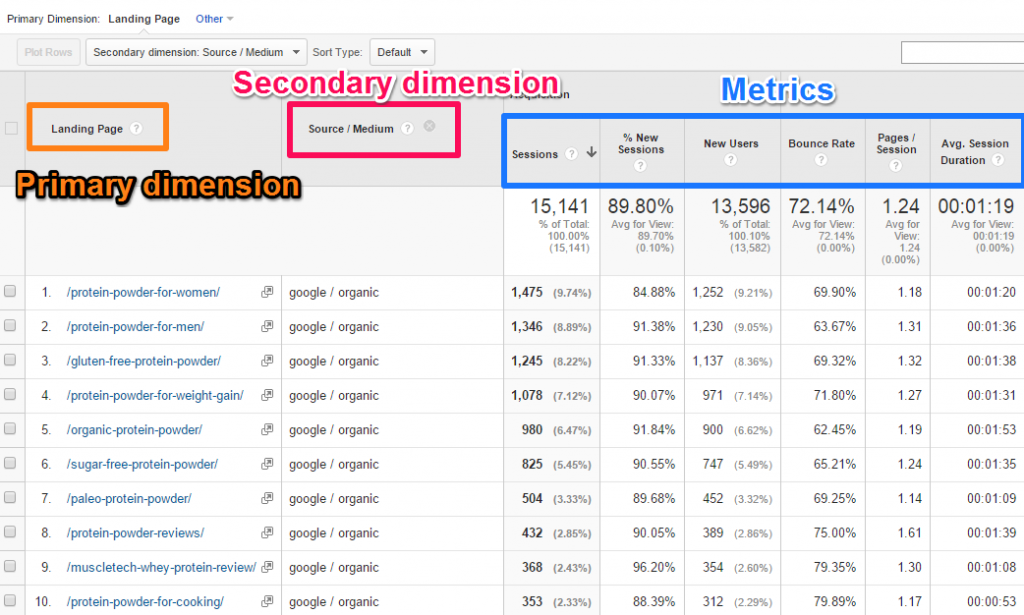Navigating the Midst of Additional Measurement in Google Analytics: A Comprehensive Exploration on Its Performance
In the world of digital analytics, the details of data interpretation frequently hold the secret to unlocking important understandings. Within the expansive toolkit of Google Analytics lies a feature that offers as a hidden gem for those that look for a deeper understanding of individual behavior and website performance. Second measurements, though seemingly uncomplicated in the beginning look, harbor a wide range of untapped possible waiting to be harnessed. As we get started on this journey to discover the nuanced capability of second measurements, we will certainly uncover how this attribute can light up patterns, reveal correlations, and inevitably lead the way for informed decision-making in the digital landscape.
Recognizing Additional Dimensions in Google Analytics

Understanding just how additional dimensions job is crucial for leveraging the full power of Google Analytics. By incorporating main metrics with secondary dimensions, you can get useful understandings that drive notified decision-making and optimization strategies.
Leveraging Secondary Dimensions for Information Evaluation
Building upon the foundational understanding of how second dimensions enhance data evaluation in Google Analytics, the application of these additional layers of details becomes extremely important in extracting useful insights for notified decision-making and optimization methods. By leveraging additional dimensions, analysts can delve deeper right into the performance metrics by adding even more context to the primary measurements, hence discovering concealed patterns and connections that might not appear at very first glimpse. This deeper degree of evaluation enables businesses to much better comprehend user actions, identify fads, and identify locations for improvement.
In addition, second dimensions provide an even more thorough sight of the information, enabling division based on different parameters such as demographics, tools, web traffic resources, and a lot more. This division promotes an extra granular analysis, allowing companies to tailor their methods and campaigns to details target market segments for improved targeting and personalization. Fundamentally, the tactical use of secondary measurements empowers organizations to make data-driven choices that drive development and success in the electronic landscape.
Advanced Strategies for Additional Dimension Application
Checking out intricate techniques to harness the complete potential of secondary dimensions in Google Analytics raises the deepness and class of information evaluation for calculated decision-making. One sophisticated technique for executing second dimensions is making use of custom-made dimensions. By specifying custom measurements, users can section information further to obtain more certain understandings into individual habits, such as tracking next interactions with certain components on a website or keeping an eye on the efficiency of a particular advertising and marketing campaign. Another advanced method is the application of regex (routine expressions) within secondary measurements. Regex enables for more powerful and versatile pattern matching, allowing individuals to develop complicated filters for information analysis. Additionally, incorporating second dimensions with innovative sectors can give a lot more granular understandings by applying multiple layers of segmentation to the information. This method permits a deeper understanding of user actions based on numerous requirements concurrently. Executing these advanced strategies for secondary dimensions in Google Analytics empowers individuals to perform extra sophisticated analysis and make data-driven choices with precision.
Interpreting Insights Through Secondary Dimensions

When translating understandings via additional dimensions, it is necessary to think about the context of the data and exactly how different measurements interact with each other. For instance, understanding which details web traffic resources lead to greater conversion prices or identifying which tools users like for making purchases can supply workable understandings for optimizing advertising campaigns and boosting general web site efficiency. By meticulously taking a look at the information with second dimensions in mind, companies can make educated decisions that drive significant outcomes and boost their electronic existence.
Maximizing Performance With Second Dimensions

One key method to optimize efficiency with additional measurements is by segmenting information much more granularly. This permits you to separate details factors that may be affecting your metrics and gain a better understanding of what drives success or failure in your digital initiatives. By integrating additional measurements such as 'device classification' and 'landing web page,' you can pinpoint which gadget kinds are most effective for specific landing pages, enabling you to customize your methods accordingly.
Additionally, using additional measurements can help you recognize patterns, patterns, and correlations that may not be noticeable when evaluating data with main measurements alone. This deeper degree of analysis can lead to even more informed decision-making and inevitably boost the overall efficiency of your internet site or digital advertising and marketing projects.
Verdict
In final thought, second dimensions in Google Analytics play a crucial role in improving data analysis and offering deeper understandings into web site performance. By using innovative strategies and translating the data properly, businesses can optimize their techniques and boost overall efficiency. Comprehending the capability of secondary dimensions is vital for making notified decisions and driving success in the digital landscape.
By leveraging secondary dimensions, analysts can delve deeper into the performance metrics by including more context to the main dimensions, hence discovering covert patterns and connections that could not be obvious at initial look. One innovative strategy for implementing secondary dimensions is the use of personalized measurements.Having actually mastered innovative strategies like personalized measurements and regex for secondary dimension implementation in Google Analytics, the following crucial step is analyzing the useful insights obtained with these sophisticated information division approaches. Translating insights via secondary measurements entails evaluating the connections between the main and additional measurements selected, discovering patterns, trends, and relationships that might not be quickly obvious when looking at the information in its totality.When translating insights through second dimensions, it is crucial to consider the context of the information and exactly how various dimensions communicate with each various other.